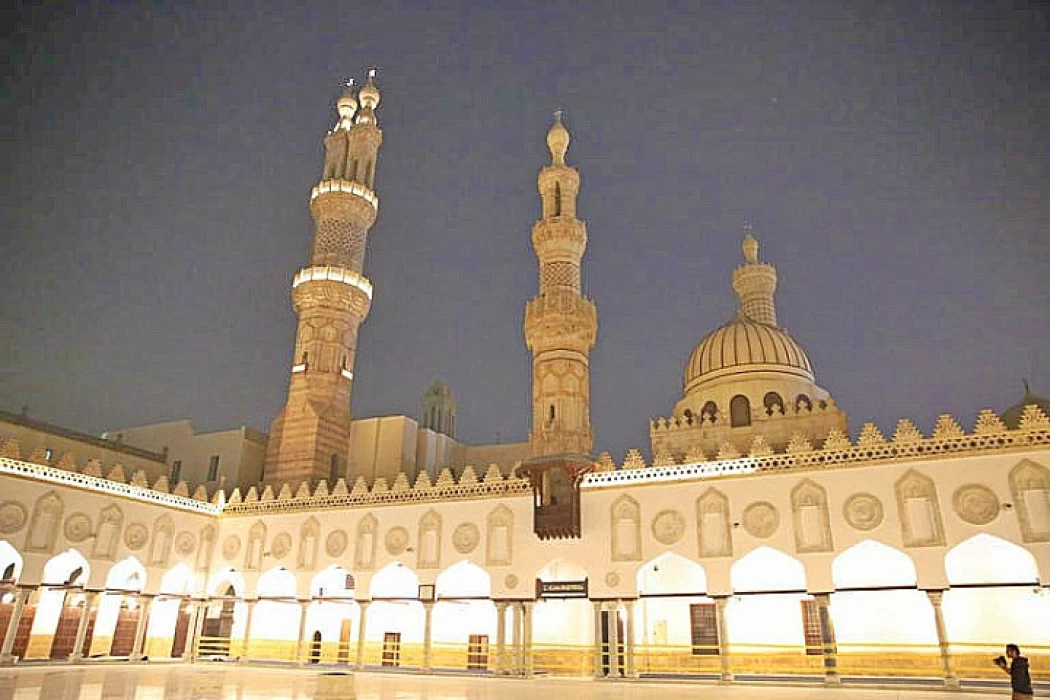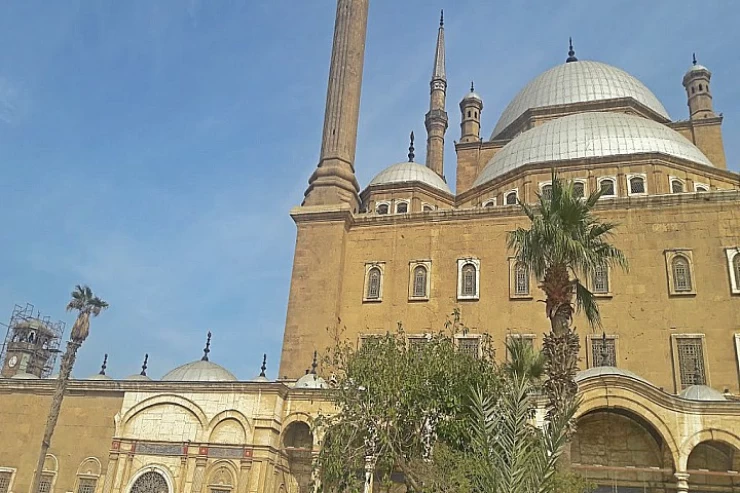
阿兹哈尔清真寺
爱资哈尔清真寺|
艾资哈尔祈祷院是开罗精彩的清真寺和要做的事情之一,它被认为是开罗一千年前设计的历史小学,参观卡利里汗的人们可以在开罗一日游中看到祈祷之家。 它已经接近十世纪的尖端,成为每个星期五的公众集会祈祷控制的官方祈祷屋,并被认为是一个非常狂热的Jummah。
阿资哈尔迷人的祈祷之屋的开发者和以前一样,因为开罗本身是另外一个好的法蒂玛军队领导人,也是开罗的建造者,加瓦尔-埃尔-塞凯利,奉法蒂玛哈里发al Mui'z le Din Allah的命令。阿兹哈尔的建设需要在整个常规的埃及旅游套餐或从机场出发的开罗一日游中看到,始于公元970年,大约花了3年时间才完成。
伊斯兰开罗
v清真寺的建筑风格:最初,Al Azhar在其目前占据的领土的1/2上进行了设计。 在不同的时代,许多哈里发,国王,苏丹和埃及总统都进行了扩建,新建筑和修复,直到祈祷之家达到了今天的规模和形式。 Al Azhar的第一个祈祷之家由3Iwans或祈祷大厅组成,在中心内,有一个称为Sahn的副学位开放式法院。 祈祷之家的门口是朝西设置的,这部分包含一个简单的塔,或者被称为在法蒂玛风格设计的穆斯林设计塔。 这部分装饰着科菲穆斯林铭文和花卉动机,这是传统祈祷之家目前仍然可以获得的唯一剩余特征。
然而,al-Azhar祈祷之家最大的设计是由"Abd al-Rahman bin Katkhuda"在一年内(1167AH=1753AD)完成的,他热衷于建筑和建筑。
Abdelrahman Katkhuda的Sabil
Abdelrahman Katkhuda的Sabil
然后他走到qiblah的走廊上,一个全新的祈祷室,用石柱与最初的隔间隔开,从那里升起三个台阶,这是三个米哈拉布,从西北方面建立了一个超大的门,现在可以俯瞰Al-Azhar sq。,由两个相邻的门组成,称为Muzain之门,并联合引入了一个全新的门,称为Al-Sa'idah之门,并在其旁边创建了一座塔,至今也存在,这扇门导致了Al-Sa'idah月份。 Al-Azhar的走廊。
法蒂玛量内的阿资哈尔祈祷之家
也许向阿资哈尔介绍的主要设计是由法蒂玛哈里发完成的,以维护上帝的信仰,在伊斯兰开罗,无论他在哪里提升了porticos王国;在马穆鲁克时代,苏丹人照顾阿资哈尔,一旦在Ayyubid时代遭受忽视,帕特里夏"Izz Al-Din Aydar是担心阿资哈尔的首要因素,因此他恢复了从他身上破解的元素。 而在它的辉煌,生活来到一个副学位完成一次机会,人们也庆祝星期五祈祷在这一天(18Rabi`Al-Awwal年665AH=十九个公历月1266AD)。 这将是今天在整个埃及日游开罗的穆斯林艺术收藏馆内看到的。 公元1125年,法蒂玛统治者Al Amer Be'ahkam Supreme为祈祷之家建立了一个Mihrab(一个利基,表明由于向Ka'aba祈祷),由Aro土耳其木材制成,装饰着大量的花卉和几何形状。
马穆鲁克时期内的Al Azhar:
爱资哈尔清真寺
在切尔克斯马穆鲁克王朝统治时期,爱资哈尔祈祷院的设计一直没有停止,大土耳其人盖特拜-马哈茂德(Qaitbay Al-Mahmoudi,伊斯兰历 873 年=公元 1468 年)将祈祷院西北侧的门夷为平地,并在其右侧设计了一座开罗最漂亮的尖塔、 随后,大土耳其人坎苏赫-古里(Qansuh al-Ghuri)设计了双头塔,这是爱资哈尔最好的尖塔,也是穆斯林世界罕见的新颖塔型。
一所新的宗教学校,即塔布里西宗教学校穆斯林教学机构,是由纳赛尔*穆罕默德*伊本*卡劳恩统治时期的军事指挥官贝巴尔*哈赞达尔设计的。 当你进入爱资哈尔祈祷之家后,它就会被放在适当的手上。 这是一个比祈祷之家大得多的房子,主办穆斯林教义类别和联合有一个超大的穆斯林图书馆。
阿富汗宗教学校建于公元1340年,坐落在门口的左手边。 它包含现在的Al Azhar图书馆。
奥斯曼帝国时代的Al Azhar:
Al Azhar在奥斯曼帝国时代经历了大量的增长。 {最重要|最大}和最重要的建筑工作是由统治者Abdel Rahman Katkhuda在公元1753年完成的,他通过在mihrab后面增加一个riwaq(门廊)来扩展祈祷之家的世界,这个门廊比整个祈祷之家 他还增加了一个新的minbar和mihrab。 Katkhuda还有两个漂亮的门:南墙内的主要门被称为Sa'ayda门,因此在祈祷之家的部分内的Shroba门,旁边还有一个尖塔。 Katkhuda还负责建造迷人的西门,其精湛的穆斯林装饰,目前是祈祷之家的入口。
阿兹哈尔已经被最高古物委员会进一步翻新,最终看起来好像这是在你通过各种开罗通宵参观祈祷之家的时尚时间内。 艾资哈尔作为祈祷之家和学术机构,必须在几个世纪的埃及历史中,特别是在打击法国和英国占领方面,争夺重要的作用。
爱资哈尔大学 :
阿兹哈尔大学是世界上最大、最重要的穆斯林教学机构,也是第二所时尚的穆斯林大学。 Al Azhar大学的穆斯林教学从什叶派教学到法蒂玛时代开始的逊尼派教学,它仍然是埃及和全世界最重要和有声望的教育机构之一。
在埃及,在萨卡拉有一个特殊的地方叫做Memphite Tomb Of Horemheb。 它有一个叫做Amenemhet Iii金字塔的特殊金字塔,如果你去那里,你可以学到很多关于它的有趣的东西。
在埃及,阿斯旺/阿斯旺旅游中有一个特殊的地方叫做旅游。 这是一个你可以了解伊斯兰开罗文化和历史的地方。
Al Azhar Mosque |
Al Azhar house of prayer is one of the wonderful mosques and things to do in Cairo, it considered is the primary University in history engineered over one thousand years past in Cairo, folks visiting Khan El Khalili can see the house of prayer throughout their Cairo Day Tours. it had been towards the tip of the tenth century to be the official house of prayer for the congregational prayers control each Friday and is thought in a very rabic as Jummah.
The developer of the fascinating house of prayer of Al Azhar is as previous because the town of Cairo itself is additionally the good Fatimid army leader and also the builder of Cairo, Gawhar El Seqelly, with the orders of the Fatimid caliph, Al Mui'z le Din Allah. The building of Al Azhar that needs to be seen throughout the regular Egypt Travel Packages or Cairo day tours from the Airport began in 970 A.D. and it took around 3 years to be accomplished.
Architectural style Of Al Azhar Mosque: Initially, Al Azhar has engineered on 1/2 of the realm it occupies presently. Enlargements, new buildings, and restorations are meted out by many Caliphs, kings, sultans, and presidents of Egypt throughout the varied eras till the house of prayer reached the dimensions and the form it's nowadays. the first house of prayer of Al Azhar consisted of 3 Iwans or prayer halls, and within the center, there's an associate degree open court known as Sahn. the doorway to the house of prayer was set in toward the West and this section contained a straightforward tower or as known as in Muslim design tower designed within the Fatimid style. This section was adorned with Kofi Muslim inscriptions and floral motives, which are the sole remaining feature of the traditional house of prayer that's still obtainable currently.
However, the biggest design of the Al-Azhar house of prayer was performed by “Abd al-Rahman bin Katkhuda” within the year (1167 AH = 1753 AD) and he was keen on building and construction.
Then he else to the corridor of the qiblah a brand new prayer compartment separated from the initial compartment by stone pillars, and 3 steps rise from it, And it's 3 mihrabs, and established an oversized door from the northwestern aspect that presently overlooks Al-Azhar sq., consisting of 2 adjacent doors, referred to as the Gate of Muzain, and conjointly introduced a brand new door known as the Gate of Al-Sa'idah and created a tower beside it that also exists so far, and this door results in the Al-Sa’idah months. The corridors of Al-Azhar.
Al Azhar house of prayer within the Fatimid amount
Perhaps the primary design introduced to Al-Azhar was meted out by the Fatimid caliph, to preserve the faith of God, in Islamic Cairo, wherever he enhanced the realm porticos; within the Mamluk era, the sultans took care of Al-Azhar once the neglect it suffered within the Ayyubid era, and patrician “Izz al-Din Aydar was the primary to worry concerning Al-Azhar, thus he revived the elements that were cracked from him. And in its splendor, life came to an associate degree finish once a chance, and also the folks celebrated the Friday prayers in it on the day (18 Rabi` al-Awwal year 665 AH = nineteen Gregorian calendar month 1266AD). which will be seen nowadays within the depository of Muslim Arts throughout Egypt day tours in Cairo. In 1125 A.D., the Fatimid ruler Al Amer Be'ahkam Supreme Being established a Mihrab for the house of prayer (a niche that indicates that thanks to praying towards Ka'aba) created out of Aro Turkish wood that was adorned with loads of floral and geometric shapes.
Al Azhar within the Mamluk Period:

The design of the Al-Azhar house of prayer failed to stop throughout the reign of the Circassian Mamluks, wherever grand Turk Qaitbay Al-Mahmoudi (873 AH = 1468 CE) razed the door on the northwestern aspect of the house of prayer, engineered it once more because it is currently, and engineered on its right a sleek tower of the foremost lovely minarets of Cairo, Then grand Turk Qansuh al-Ghuri engineered the two-headed tower, the very best of the minarets of Al-Azhar, a novel variety of the tower that's rare within the Muslim world.
A new madrasa (religious school), the Tabrisy religious school Muslim teaching establishment, was engineered by Baybars Khazendar, the military commander during the reign of Al Nasser Mohamed Ibn Qalaun. it's set to the proper hand after you enter the Al Azhar house of prayer. This else a much bigger house than the house of prayer that hosted Muslim teachings categories and conjointly had an oversized Muslim library.
The Afghaweya religious school was inbuilt in 1340 A.D. and it's set on the left-hand aspect of the doorway. It contains the library of Al Azhar nowadays.
Al Azhar underwent plenty of growth within the Ottoman era. the {most important|the largest} and most important building work was done by the ruler Abdel Rahman Katkhuda in 1753 A.D. as he expanded the world of the house of prayer by adding a Riwaq (portico) behind the mihrab that was engineered on the next level than the full house of prayer. He additionally added a new minbar and mihrab. Katkhuda additional 2 nice gates as well: the primary within the southern wall referred to as the Sa'ayda gate and therefore the Shroba gate within the section of the house of prayer with an added minaret beside it. Katkhuda was additionally liable for building the attractive western gate with its superb Muslim decorations and that is currently the entrance of the house of prayer.
Al Azhar has been additionally renovated by the supreme council of antiquities to finally appear as if this within the trendy time throughout your visits to the house of prayer through the assorted Cairo overnight tours. Al Azhar as a house of prayer and as an academic establishment has to compete for a significant role in numerous centuries of Egyptian history, particularly in fighting the French and British occupation.


















